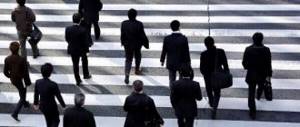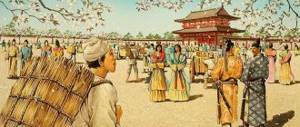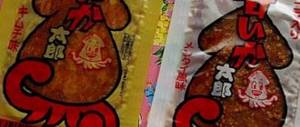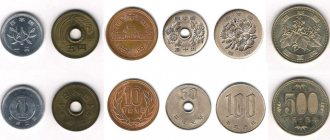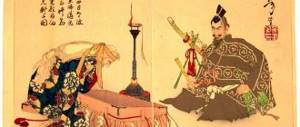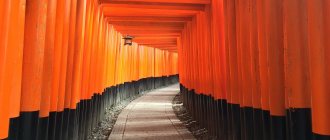What is Pachinko
Pachinko is the most popular leisure activity in Japan . Approximately 50 million Japanese play pachinko occasionally, and 30 million play pachinko regularly. The game is also popular in Australia and New Zealand, is found in many gambling houses in the United States of America, and has recently appeared in the UK. Pachinko has not yet taken root in the Russian Federation, however, a boom of this game is possible in our entertainment centers.
The name of the game comes from the Japanese “pachi-pachi”, which means clicking. The origin of pachinko for certain . Presumably the first gaming hall with these machines was opened in Osaka in the early 20s of the twentieth century. Americans believe that pachinko is a type of pinball, which, of course, was invented in the USA.
Pachinko is played using steel balls with a diameter of 11 millimeters. The price of one such ball in Japan is 4 yen, although no self-respecting player buys balls for less than a thousand yen. The goal of the game is to direct the balls, using a special device that affects their speed, into winning pockets on the pachinko playing field. There are a lot of various obstacles on the field that affect the trajectory of the ball, which makes the game of pachinko unpredictable (although there are players who claim that with certain skills you can be guaranteed to win at pachinko ). Most of the balls, bypassing all the obstacles, will fall down the playing field and will not bring the player any winnings. But some will fall into pockets, which will activate the machine to issue winnings. And the winnings are the same balls, which are poured automatically into a special tank. Later, these balls can be exchanged at the cash register for prizes (games with cash winnings are prohibited in Japan), and the prizes are then exchanged for money near the gaming room. This scheme is a malicious manipulation of Japanese Law, but it works throughout the country. Accordingly, in other countries where gambling is legal, pachinko winnings are given out in cash.
There are quite a few varieties of pachinko . There are slot machines in which the player can not only influence the speed of the ball, but also regulate some intermediate obstacles on the machine field; there is a type of game called “Pachislo” , it uses coin acceptors; In new pachinko, there is a small LCD screen on the field that shows the winnings and sometimes acts as a slot machine. In general, in the 80s of the last century, pachinko machines became computerized, music and graphics were added to them, making pachinko a more exciting game.
Pachinko are Japanese gaming machines that are somewhat reminiscent of children's billiards. The gameplay is as follows: a spring lever throws a metal ball onto the playing field, which is surrounded by various obstacles (partitions, rods) that prevent the ball from getting into the hole. If the player manages to roll the ball into one of the prize holes, the machine will give out a prize - ten more of the same balls.
Change for the better: youth and housewives say no to pachinko
The standard price for one pachinko ball is 4.32 yen including tax. That is, one hundred yen can buy 23 balls. But recently, more and more establishments have been reducing the price, offering balls at prices ranging from 0.5 to 2 yen per piece. This allows even players with a not very large budget to play for a long time. And yet, many young people, as well as housewives, refuse to play pachinko, explaining their refusal by the high probability of losing quickly and lack of funds.
Despite its obvious popularity, pachinko is gradually losing popular recognition. Apparently, big changes await this gambling business in the not too distant future. Total industry revenue has been falling steadily since 2005 (then at its peak it was ¥34.86 trillion). People get tired of playing the same games, and constant rumors about deliberate malfunctions of slot machines in favor of the establishments do not add enthusiasm. In addition, young people now have many other options: computer games and other entertainment, which are clearly preferable for many young people to gaming. When buying pachinko machines, establishments, as a rule, focus mainly on regulars with their morbid passion, and as a result lose ordinary, moderately gambling customers. There are fewer and fewer pachinko lovers in Japan. And in South Korea, for example, this type of business is generally prohibited by law.
How to play pachinko?
(in Russian) Photo credits: Header photo: Adam Pachinko machine: Evan Williams Pachinko balls: Tini S.
History of Pachinko slot machines
In Japan, Pachinko appeared in the late 40s of the 20th century. Most likely, American slot machines became the prototype of these slots. Interest in the new exciting game has captured the entire country. Pachinko arcades have begun to open everywhere in Japan .
The game got its name from the sound “Pa” that is heard when the spring of these devices straightens. “Chinn” is the sound that is heard when the ball hits a metal obstacle. And the Japanese say “Ko” when a ball falls into one of the holes on the Pachinko .
slot machines themselves are completely primitive. You don't need any special skills or training to play them. The player simply presses the buttons and tries to roll the ball into one of the holes. It would seem that this entertainment is for a kindergarten, but a huge number of Japanese adults play Pachinko Suffice it to say that in Japan there are about 18 thousand gaming halls with Pachinko slot machines , which are always full of customers.
Online casinos that support Japanese language
Japanese is the official language of Japan. It is considered one of the most difficult, but many people around the world speak Japanese. And, with the number of interested potential Asian gamblers steadily growing, many online casinos offer Japanese as a primary or secondary language. If you are interested in the opportunity to play in a casino in Japanese, you can choose one of the establishments you like presented on this page.
Available currencies in online casinos in Japanese
Due to the fact that the majority of Japanese online casinos primarily focus on the local market (Japan), the Japanese yen is offered as the default currency in most cases. However, many online casinos in Japanese strive for an international format, so such establishments dilute the list of available currencies with the most common options: US dollars, euros, Russian rubles, Chinese yuan.
Country restrictions in Japanese online casinos
Given the desire of Japanese online casinos to cover as many promising markets as possible, most establishments accept players from almost any country. However, there are a number of local establishments. Such casinos only allow players from Japan or neighboring Asian countries to register. If you do not have enough information regarding restrictions in a particular online casino, you should contact support. You can check for yourself whether your state is a prohibited state by going to the terms and conditions section, or by specifying your country of residence in one of the options during the registration process.
Other available languages in Japanese online casinos
Japanese online casinos often include other languages in the list of available languages, in most cases they belong to international or to the group of popular Asian ones. Among the languages offered you can often find English, Chinese (including simplified), Spanish and others. If, when you go to an online casino site, you find that Japanese is not set as the default language, check the site for a menu with a list of available languages, a button with a flag or Japanese symbols.
Deposit and withdrawal of funds in online casinos in Japanese
Typically, Japanese online casinos provide a wide range of methods for depositing and withdrawing winnings. All available methods are usually listed on a separate page on the establishment's website. Among them you can often find: electronic wallets, banking and international money transfer services, cards (debit and credit). Payment systems can be local (regional) or global in nature. Please note that some methods require payment of commissions for the financial transaction. The option also has a specific time frame within which you will receive your reward directly to your account.
Pachinko arcades
The Shibuya metropolitan area is home to one of the largest Pachinko arcades, with over 1,000 Pachinko machines. About 10 thousand players visit this establishment every day. Most often, these halls gather elderly Japanese women who love to spend their free time playing Pachinko slots . Of course, these salons are frequented by students, housewives, and adult men who can afford to spend about 500 yen on their favorite entertainment. There are also serious players who play big and spend huge sums of money on the game in one evening.
To attract and retain customers, Pachinko gaming parlor owners are constantly upgrading slot machines. Nowadays you can even buy balls for the game using a credit card.
Favorable exchange: prizes and cash instead of balls
Pachinko balls
After finishing the game, pachinko parlor customers exchange their remaining balls for item prizes. As a rule, these are cigarettes or sweets, but can be any other option - from ties, handkerchiefs and socks to electrical goods, CDs, DVDs, cosmetics and jewelry. The range of prizes depends on the establishment. In some particularly popular pachinko parlors, the "exchange area" can be compared in size and selection of goods to a small supermarket or convenience store.
However, most pachinko regulars play not for prizes, but for money. The monetization algorithm is as follows: they exchange balls in the “exchange zone” for special prizes, which they then sell at a special point of sale, receiving cash for it. According to Japanese law, players are prohibited from receiving cash prizes directly from pachinko parlors, which is why such an intricate scheme was developed.
With the advent of digital machines, pachinko has become a much more gambling game than before. In one game you can win 20-30 thousand yen, and sometimes 50 or even 100 thousand yen. Quite a lot of people win such large sums. Some eventually even develop gambling addiction (gambling addiction), which in especially severe manifestations represents a certain social problem.
Pachinko phenomenon
Pachinko phenomenon for many years. After all, it is impossible to explain why these primitive slot machines attract such a huge number of people. The Japanese themselves say that they play Pachinko because these slots help them relax, take their mind off problems and have fun.
Nowadays, you don't have to fly to Japan to play Pachinko. After all, now in many online casinos you can play slot machines like Pachinko.
How the game Pachinko can be useful for game developers
The pachinko phenomenon was of interest to researchers Keiji Amano and Geoffrey Rockwell. They analyzed the game and came up with a number of conclusions that game developers can take note of.
In fact, some of them are already doing this. For example, just recently the company Evoplay Entertainment offered players a new development, Pachin-girl, dedicated to the popular Japanese game (this information is not aimed at promoting goods and services on the market and does not constitute advertising in accordance with Part 2 of Article 2 of the Federal Law of March 13, 2006 No. 38-FZ “On Advertising”).
As for life hacks that game developers can learn from the cult Japanese game, these include:
- Audiovisual stimulation.
- Versatile controls that let you find your own rhythm.
- Licensing of famous characters.
- Reusing existing templates to save money.
- Shareware game (regular small payments instead of large ones).
Pachinko in anime
Japanese broadcaster TV Tokyo has launched a new website www.tv-tokyo.co.jp/anime/sengoku_otome/, dedicated to the new anime “ Sengoku Otome ~Momoiro Paradox~ (Warring-States Era Maidens ~Pink Paradox~)”. The authors were inspired by pachinko slot machines (vertical pinball played for money).
The anime will tell us the story of a modern schoolgirl named Hideyoshi (Rina Hidaka), who suddenly finds herself in a mysterious country and meets Oda Nobunaga (Megumi Toiguchi), Akechi Mitsuhide (Eri Kitamura), Date Masamune (Yuka Hirata), Imagawa Yoshimoto (Rei Mochizuki) , Tokugawa Ieyasu (Satomi Akesaka), Takeda Shingen (Sachi Kokuryu), Uesugi Kenshin (Maria Ise), and other warriors of the Sengoku era. Hideyoshi collects the “legendary crimson armor” to unite the peoples of these lands.
Hideki Okamoto (DC II: Da Capo II, Nagasarete Airantou) will direct the anime under TMS Entertainment, while Touko Machida (Ōkamikakushi, Lucky Star) will write the script. Koji Yamakawa (chief animator for Strike Witches, Strike Witches 2) will be translating the original game design into the anime world.
A manga adaptation of ~Hyakka Ryōran~ Sengoku Otome has been published in the Dengeki Daioh magazine since 2009.
Now let's look at real pachinko. As an example – hellish pachinko with characters from the anime “Gyakkyou Burai Kaiji”
Part 1
Part 2
Part 3
Slot machines in Japan are a full-fledged cult, no less original than the hobby for anime or frozen schoolgirl panties. It is clear that slot machines mean not only clones of Street Fighter and nightmarish remakes of Canter-Strike, but also much more daring developments.
One of the newest wonders is a simulator of pulling the tablecloth from the festive table, without broken plates or spilled drinks. But this is all ideal, of course, while the average player manages to spill and break everything, creasing the virtual tablecloth even more thoroughly than he would have done in real life.
At the moment, the strange machine, called, by the way, The Tablecloth Hour, is available only in test mode at Shibuya stations. If you're nearby, don't miss your chance.
But in general…
What has changed and what has remained the same
Arcades in Japan still exist today, but the era of home consoles still greatly influenced their popularity. The number of halls with arcade machines is dramatic: if in the mid-80s there were 44 thousand of them, today only 4856 are registered. At the same time, the rate of release of new games has also decreased: in the 90s, new machines appeared almost every month, but now you can see only a few releases a year.
New games, as before, are created by several companies: Sega, Taito, Namco, Konami and Capcom. They also own all the major arcades and entertainment centers in Japan. Although the appearance of the arcades themselves remained the same, the set of machines has changed. Games using touchscreen, VR and other new technologies have appeared. Retro slot machines, of course, have not gone away: they are always in demand among regulars.
The contingent of visitors has also changed: their average age is now 40-50 years. This is because the regular visitors have matured: they used to come here for a couple of games after school, today they come here during a break at work. Of course, children and teenagers still play slot machines, and going to an arcade with the whole family on a day off is also not uncommon. However, the main visitors to arcades today are people over 40.
This “maturation” of the audience does not reflect a loss of interest in arcades among young people, but rather a general one: the average age of a Japanese resident today is 47 years old. Arcade owners are less and less focused on the needs of young people: it is much more profitable to attract older people to entertainment centers.
For example, a third of the visitors to Sega Dream Factory are over 60. The owners of the arcade are happy about this and have organized a whole system of bonuses and a set of special services for them: in cold weather, old people will be offered to cover themselves with a blanket.
The reason why arcades are so popular among older people is simple: it’s a good way for them to socialize. If at first grandparents were brought to the arcade by relatives, now they come on their own: playing slot machines is the easiest way to make new friends of your own age with similar interests. Many arcades even organize separate rooms for such visitors. It contains mainly gambling simulators - a favorite pastime of older Japanese people. In addition to a special set of machines, everything here is organized differently: the sound in the games is lowered, there are no crowds or queues - the atmosphere is conducive to relaxation.




